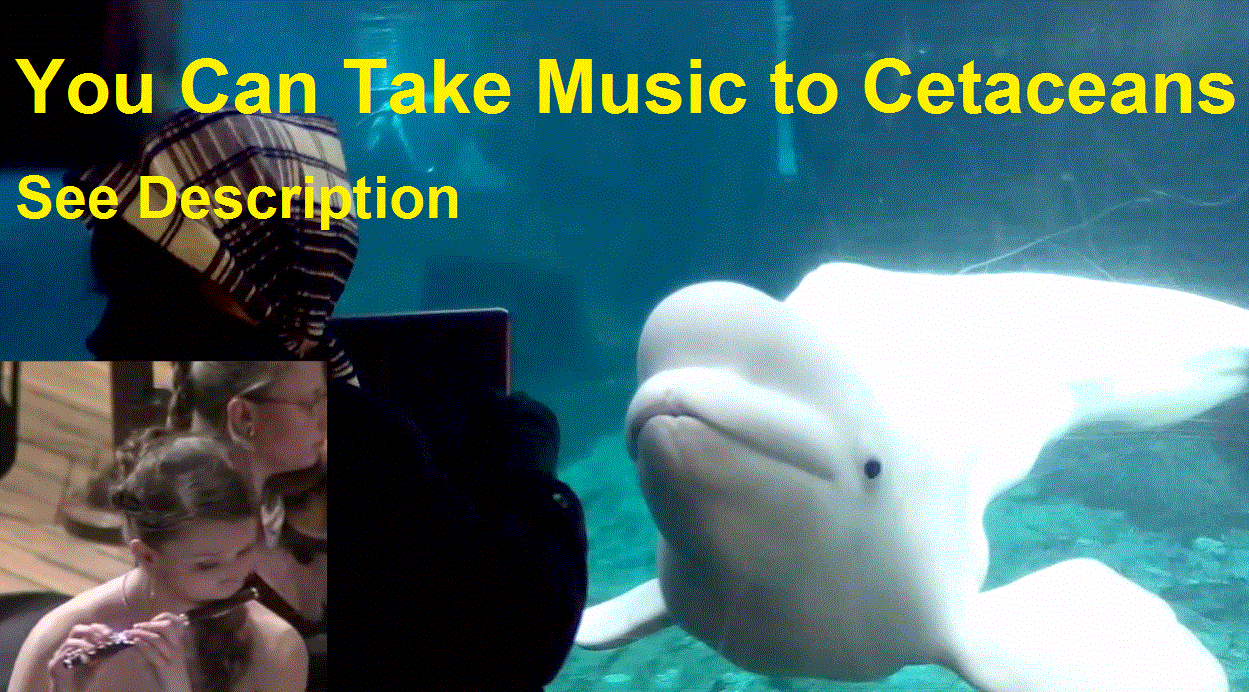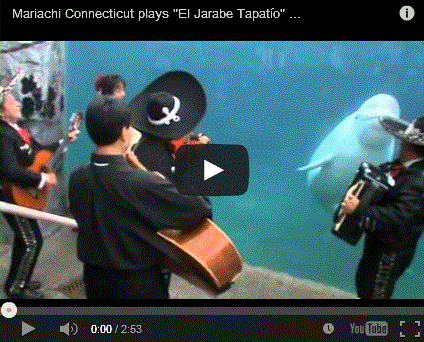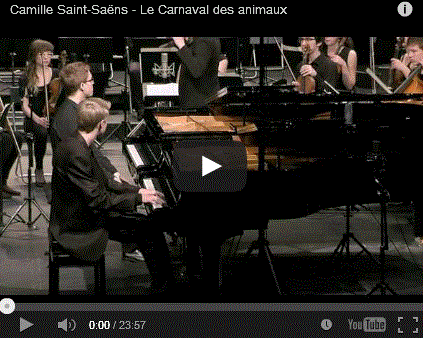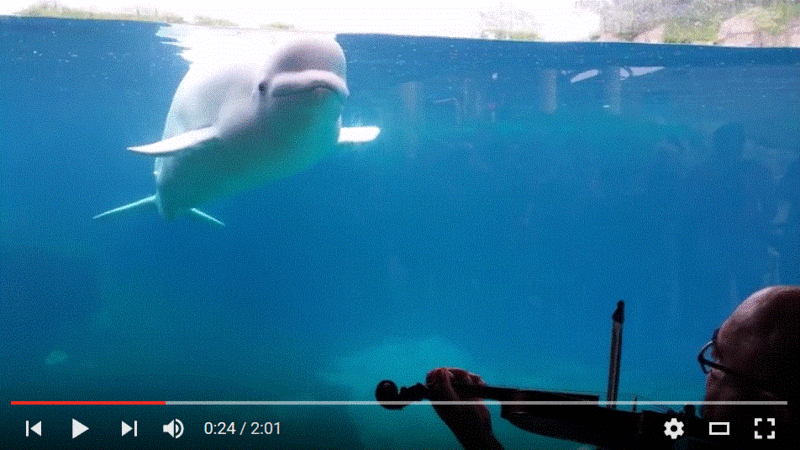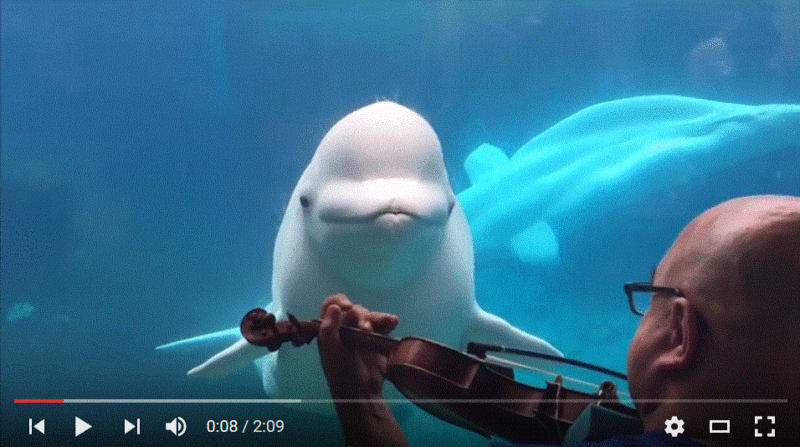Click above for 1st Half, Here for 2nd Half
Playing Music for Cetaceans in Aquariums
Music where Cetaceans Can See Patterns
Music where Cetaceans Can See Instruments
Playing Music for Wild Cetaceans
SMAD.info - Sea Mammals Are Delightful
Movie: Orcas at Vancouver Aquarium with choir and soloists
Cello in Churchill, Canada: Underwater views of belugas
Cello, above water 1
Cello, above water 2
Usual sounds without cello
Interview: wild belugas like the Beatles
Canada adopted new rules 21 June 2018 with $500,000 fines for interaction, though they permit audiovisuals, 38(1)(f). They also permit very loud seismic surveys and noisy ship traffic despite alternatives. and comments.
Paul Spong in Canada found orcas wanted new tunes, not repeats, and had "extraordinary acoustic memory." They liked Mozart, Miles Davis, Rolling Stones, and Ravi Shankar.
A Soviet icebreaker found belugas reacted best to classical music as an invitation to follow the ship to open water.
Pandora and Slacker are commercial services which provide a steady stream of new tunes, after people give them one or more starting tunes. Listeners can "Like" or "Skip" any tune played, and the service learns the taste of the listener.
With a lever, 3 hydrophones, or a touchpad, whales or dolphins could easily choose "Like" (turn music on or raise volume), "Skip" to next, and "Off."
A 2009 survey of 238 staff at 60 zoos worldwide found that 93% think auditory enrichment is "Important" for mammals, but 74% never provide it, because of staff time constraints. So an automatic service like Slacker (US+Canada) or Pandora (US) lets animals have music when they want it, with little need for staff maintenance. (The study found that visual enrichment is almost as important and rare as auditory. Streaming videos or webcams can provide that.)
OTHER EFFORTS (and more Links)
Louis Herman in Hawaii let dolphins choose music. He gave them a single lever with a limited selection, and did not publish any results.
Paul Winter has played for wolves and sea mammals.
In Sweden, dolphins chose fish to eat by pointing echolocation beams at hydrophones. The dolphins learned to echolocate on a simple target with very little teaching, according to one paper published. To disregard background noise, the researchers' computer simply noted which hydrophone heard more volume than the others.
The University of Glasgow measured heart rate and cortisol in dogs hearing various genres of music, and found decreased stress from reggae and soft rock, and that variety reduced habituation.
The National Zoo in Washington has offered musical instruments to elephants (harmonica), orangutans, otters (keyboard) and sloth bears, and published very brief videos.
The Thai Elephant Conservation Center sells CDs of elephants improvising freely on percussion and harmonicas as well as playing under human direction. Paul Barton plays classical piano music for elephants at Elephant World, Thailand. He says, "If there's music in the background, they might get a chance to see who we are as humans." Some elephants use the "finger" at the end of the trunk to press keys on a piano or piano horn, even without orientation or time to explore and practice.
Several places have had primates, pigs and rats using joysticks to move dots on a screen, for food rewards and intrinsic interest. Research papers also report on other limited music choices by monkeys, rats, birds and fish.
ENRICHMENT AND RESEARCH
Choices of music can enrich the lives of wild or captive dolphins and whales, and help them learn about humans (since music reveals something about us). Research is also possible:
- What varieties of music will cetaceans want?
- What volume will they choose?
- How will tastes differ among individuals and species?
- How many hours at a time will they listen?
- How complex will their chosen music be?
- If given a choice, will cetaceans replay tunes or keep going on to new ones (like Spong's experience)? Humans often replay favorite tunes, but reread books rarely.
- Do they make consistent sounds when they choose tunes? If so, one hydrophone would be enough to register their choices.
- Music has been used as a reward for behavior.
Sanctuary standards do not cover auditory enrichment
PRACTICALITY
Pointing an echolocation beam is as natural for cetaceans as pointing a finger is for humans. Hydrophones can cost $80 or £55, or more.
Swimmers' touchpads have the disadvantages of high cost ($730) and large size (500mm x 1500mm), and the advantage that humans can touch them as well as dolphins or whales.
Levers have the disadvantage of needing very strong, corrosion-proof suspension in or over the water, and the advantage of compatibility with standard joysticks.
Humans like music and videos, so practical systems exist to provide them. The main adaptations animals need are interfaces to control them.
Music is a human achievement which whales and dolphins can appreciate, since these are auditory creatures
We can learn more about them if they choose music as other species do, by:
- Moving a lever in the water, as dolphins in Hawaii have done, or
- Directing an echolocation beam at a hydrophone, as dolphins in Sweden have done, or
- Touching a touchpad, like the ones racing swimmers touch at the end of each lap.
